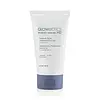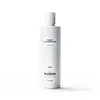What's inside
What's inside
 Key Ingredients
Key Ingredients

 Benefits
Benefits

 Concerns
Concerns

 Ingredients Side-by-side
Ingredients Side-by-side

Salicylic Acid
MaskingWater
Skin ConditioningDisodium Laureth Sulfosuccinate
CleansingSodium Cocoyl Isethionate
CleansingSodium Lauroamphoacetate
CleansingGlycerin
HumectantSodium Methyl Cocoyl Taurate
CleansingMethylisothiazolinone
PreservativeCocamidopropyl Betaine
CleansingBisabolol
MaskingZingiber Officinale Root Extract
MaskingOryza Sativa Extract
AbsorbentAvena Sativa Kernel Extract
AbrasiveDisodium EDTA
Beta-Glucan
Skin ConditioningEucalyptus Globulus Oil
Xanthan Gum
EmulsifyingMenthol
MaskingMyristoyl Tetrapeptide-13
Skin ConditioningAcetyl Carboxymethyl Cocoyl Glycine
Phenoxyethanol
PreservativeCaprylyl Glycol
EmollientSalicylic Acid, Water, Disodium Laureth Sulfosuccinate, Sodium Cocoyl Isethionate, Sodium Lauroamphoacetate, Glycerin, Sodium Methyl Cocoyl Taurate, Methylisothiazolinone, Cocamidopropyl Betaine, Bisabolol, Zingiber Officinale Root Extract, Oryza Sativa Extract, Avena Sativa Kernel Extract, Disodium EDTA, Beta-Glucan, Eucalyptus Globulus Oil, Xanthan Gum, Menthol, Myristoyl Tetrapeptide-13, Acetyl Carboxymethyl Cocoyl Glycine, Phenoxyethanol, Caprylyl Glycol
Water
Skin ConditioningAmmonium Lauryl Sulfate
CleansingAmmonium Laureth Sulfate
CleansingPEG-120 Methyl Glucose Dioleate
EmulsifyingAmmonium Xylenesulfonate
Glycerin
HumectantButylene Glycol
HumectantHydrolyzed Wheat Protein
Skin ConditioningQuillaja Saponaria Bark Extract
CleansingSaponaria Officinalis Root Extract
Skin ConditioningYucca Schidigera Root Extract
Skin ConditioningCocamidopropyl Betaine
CleansingAscorbyl Palmitate
AntioxidantPolysorbate 20
EmulsifyingDimethyl Lauramine Oleate
Skin ConditioningPolyquaternium-10
Dimethyl Mea
BufferingCitric Acid
BufferingParfum
MaskingBenzyl Benzoate
AntimicrobialLimonene
PerfumingLauryl Alcohol
EmollientAmmonium Sulfate
Caprylyl Glycol
EmollientEthylhexylglycerin
Skin ConditioningHexylene Glycol
EmulsifyingOleic Acid
EmollientSodium Acetate
BufferingSodium Chloride
MaskingSodium Glycolate
BufferingDimethylaminopropylamine
Isopropyl Alcohol
SolventSodium Metabisulfite
AntioxidantSodium Sulfite
PreservativeDisodium EDTA
Tetrasodium EDTA
Potassium Sorbate
PreservativeSodium Benzoate
MaskingPhenoxyethanol
PreservativeBenzyl Alcohol
PerfumingWater, Ammonium Lauryl Sulfate, Ammonium Laureth Sulfate, PEG-120 Methyl Glucose Dioleate, Ammonium Xylenesulfonate, Glycerin, Butylene Glycol, Hydrolyzed Wheat Protein, Quillaja Saponaria Bark Extract, Saponaria Officinalis Root Extract, Yucca Schidigera Root Extract, Cocamidopropyl Betaine, Ascorbyl Palmitate, Polysorbate 20, Dimethyl Lauramine Oleate, Polyquaternium-10, Dimethyl Mea, Citric Acid, Parfum, Benzyl Benzoate, Limonene, Lauryl Alcohol, Ammonium Sulfate, Caprylyl Glycol, Ethylhexylglycerin, Hexylene Glycol, Oleic Acid, Sodium Acetate, Sodium Chloride, Sodium Glycolate, Dimethylaminopropylamine, Isopropyl Alcohol, Sodium Metabisulfite, Sodium Sulfite, Disodium EDTA, Tetrasodium EDTA, Potassium Sorbate, Sodium Benzoate, Phenoxyethanol, Benzyl Alcohol
Ingredients Explained
These ingredients are found in both products.
Ingredients higher up in an ingredient list are typically present in a larger amount.
Caprylyl Glycol is a humectant and emollient, meaning it attracts and preserves moisture.
It is a common ingredient in many products, especially those designed to hydrate skin. The primary benefits are retaining moisture, skin softening, and promoting a healthy skin barrier.
Though Caprylyl Glycol is an alcohol derived from fatty acids, it is not the kind that can dry out skin.
This ingredient is also used as a preservative to extend the life of products. It has slight antimicrobial properties.
Learn more about Caprylyl GlycolCocamidopropyl Betaine is a fatty acid created by mixing similar compounds in coconut oil and dimethylaminopropylamine, a compound with two amino groups.
This ingredient is a surfactant and cleanser. It helps gather the dirt, pollutants, and other impurities in your skin to be washed away. It also helps thicken a product and make the texture more creamy.
Being created from coconut oil means Cocamidopropyl Betaine is hydrating for the skin.
While Cocamidopropyl Betaine was believed to be an allergen, a study from 2012 disproved this. It found two compounds in unpure Cocamidopropyl Betaine to be the irritants: aminoamide and 3-dimethylaminopropylamine. High-grade and pure Cocamidopropyl Betaine did not induce allergic reactions during this study.
Learn more about Cocamidopropyl BetaineDisodium EDTA plays a role in making products more stable by aiding other preservatives.
It is a chelating agent, meaning it neutralizes metal ions that may be found in a product.
Disodium EDTA is a salt of edetic acid and is found to be safe in cosmetic ingredients.
Learn more about Disodium EDTAGlycerin is already naturally found in your skin. It helps moisturize and protect your skin.
A study from 2016 found glycerin to be more effective as a humectant than AHAs and hyaluronic acid.
As a humectant, it helps the skin stay hydrated by pulling moisture to your skin. The low molecular weight of glycerin allows it to pull moisture into the deeper layers of your skin.
Hydrated skin improves your skin barrier; Your skin barrier helps protect against irritants and bacteria.
Glycerin has also been found to have antimicrobial and antiviral properties. Due to these properties, glycerin is often used in wound and burn treatments.
In cosmetics, glycerin is usually derived from plants such as soybean or palm. However, it can also be sourced from animals, such as tallow or animal fat.
This ingredient is organic, colorless, odorless, and non-toxic.
Glycerin is the name for this ingredient in American English. British English uses Glycerol/Glycerine.
Learn more about GlycerinPhenoxyethanol is a preservative that has germicide, antimicrobial, and aromatic properties. Studies show that phenoxyethanol can prevent microbial growth. By itself, it has a scent that is similar to that of a rose.
It's often used in formulations along with Caprylyl Glycol to preserve the shelf life of products.
Water. It's the most common cosmetic ingredient of all. You'll usually see it at the top of ingredient lists, meaning that it makes up the largest part of the product.
So why is it so popular? Water most often acts as a solvent - this means that it helps dissolve other ingredients into the formulation.
You'll also recognize water as that liquid we all need to stay alive. If you see this, drink a glass of water. Stay hydrated!
Learn more about Water